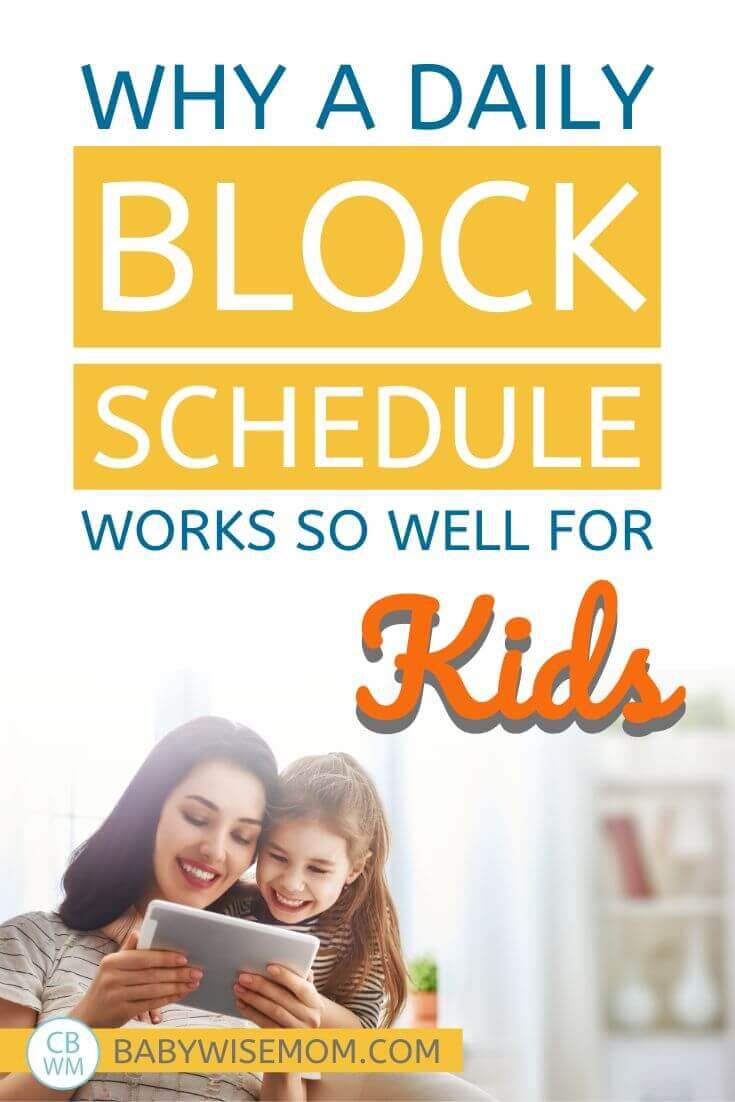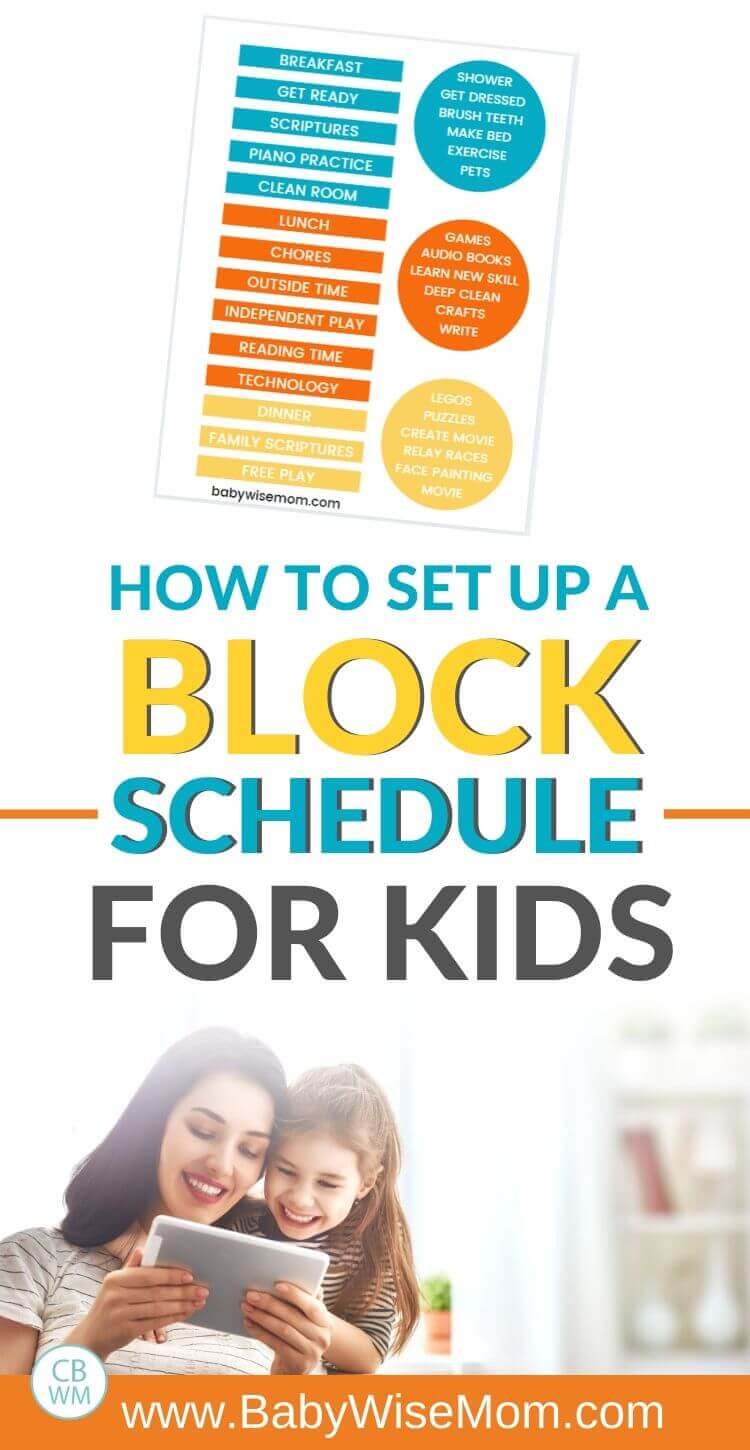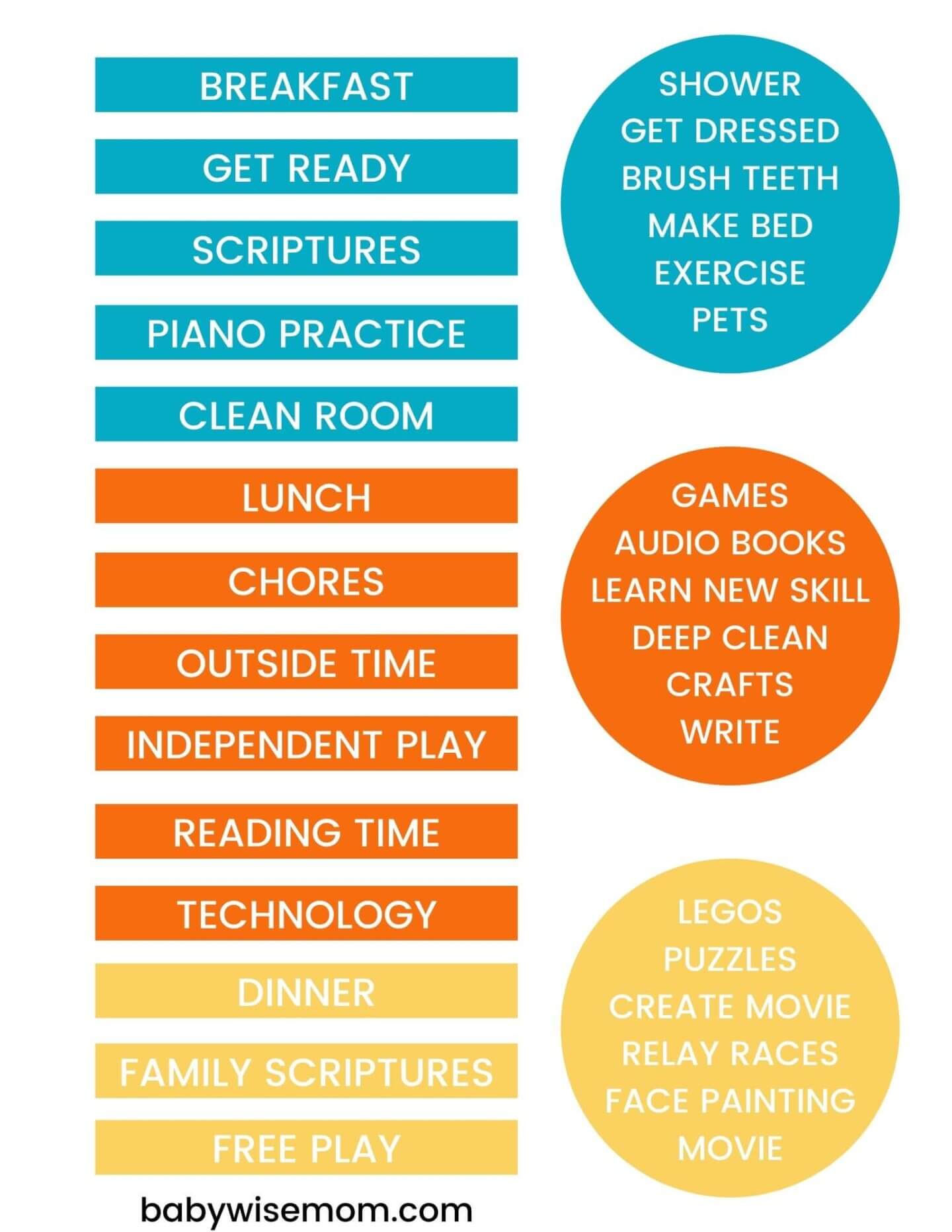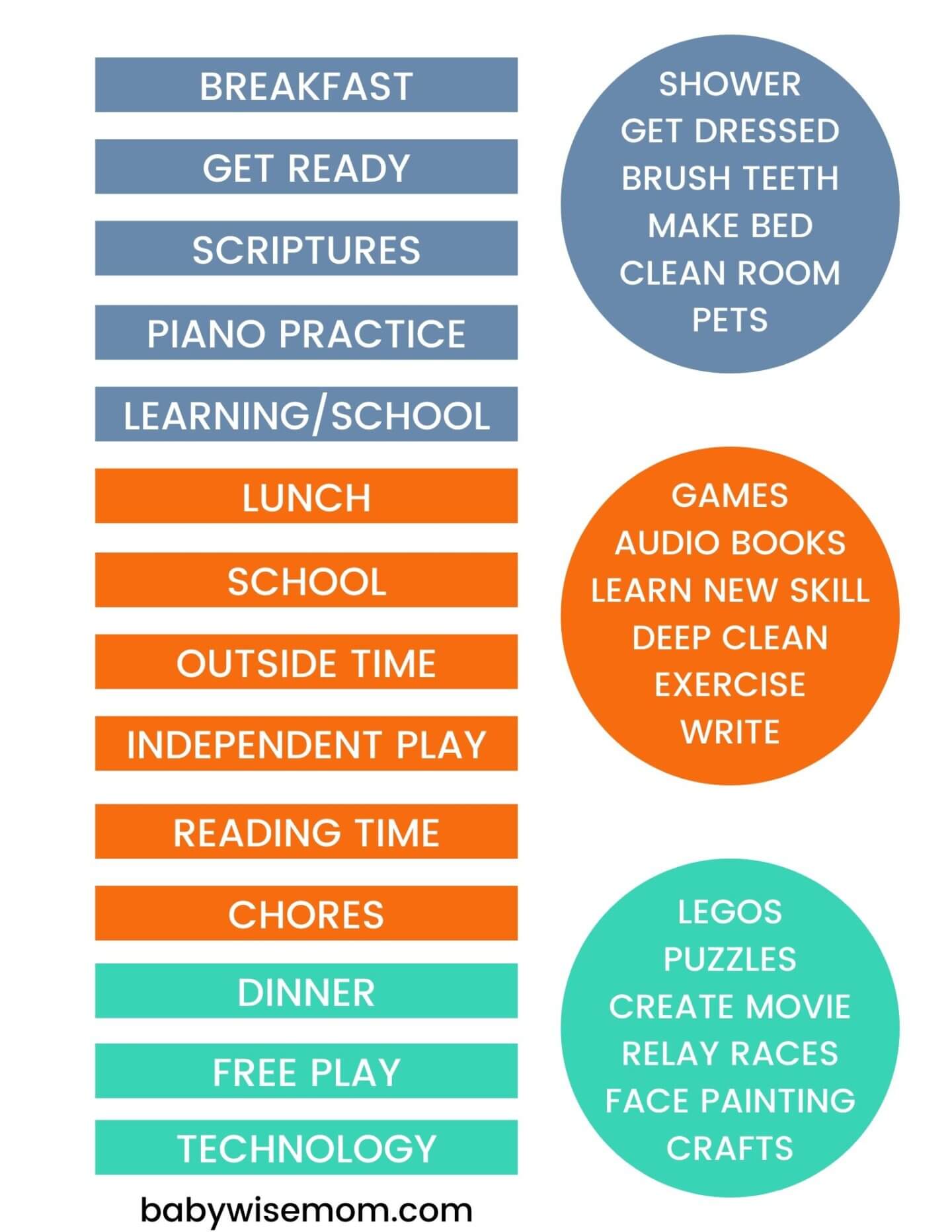How to use and set up a block schedule to structure your kids’ day and yet have flexibility. This is a great daily schedule for older kids.

I have always loved schedules, but there are times when a traditional schedule just won’t work in real life.
This summer (and in quarantine life), we moved to a block schedule rather than a schedule by time. This has worked really well. Let’s talk about the benefits of the block schedule, how to set one up, and look at a couple of block schedule samples.
Post Contents
Benefits of a Block Schedule
A block schedule is a great way to have a schedule and yet be flexible with your routine.
An hour by hour or even minute by minute schedule can work very well and even be necessary when you have a baby, toddler, preschooler, and maybe even a younger child.
Baby needs to nap at certain times, as does a toddler. Bedtimes need to be precise as do morning wake times. You need to be pretty structured in your schedule.
>>>Read: How to Plan Your Perfect Babywise Schedule
As your child and children get older, you can afford to have more flexibility in your day. Learning time doesn’t have to be precisely at 10 AM so you can be done with it by the time younger baby wakes up from nap at 11 AM.
So the first benefit is flexibility. This can be great in summer months when you don’t want to be as structured, even if you have younger kiddos, and is great for older kids. It can also be a great system if you are homeschooling.
The second benefit is the education. Following a block schedule allows your children to take some control over their own daily life and learn how to manage time.
If we structure every minute of every day for our kids until they move out, they will not have a learned a lot about how to manage their own time well. A block schedule is a great step toward teaching kids how to manage time.
>>>Read: 5 Steps to Get Your Child on a Schedule

Ages for Block Schedules
A block schedule can have varying degrees of structure added to them, so I would say you have can some version of a block schedule at preschooler or older.
I would encourage you to consider a block schedule around age 8 or older if your family situation warrants it. It won’t be right for every family with a child 8 or older.
For example, when Brayden was 8, we had a one year old who still napped twice a day and needed bedtime and morning waketime at the same times each day. We had to be pretty structured with our times still because we needed to be sure to work around the baby’s schedule.
In contrast, Brinley is not quite 8 yet and doing great with a block schedule. So it needs to work with the individual child as well as the family unit.

How to Set Up a Block Schedule
Setting up a block schedule is very simple.
First, get a piece of paper and write down all of the “must-dos” each day. Then write down a list of all of the “could-dos” you can think of.
Next, think of some anchor points in your day. What are some items that will happen each day at about the same time? Write those down.
Some ideas for anchor points include waking up, breakfast, lunch, dinner, and bedtime.
Next, look at your list of must dos and decide which chunk of the day to assign them to. Take into consideration what NEEDS to be done at certain time frames of the day. Take into account how long something might take and how long your chunk of time is between anchor points.
If wake up is 7 AM and lunch is Noon, these are two good anchor points. You have five hours in this chunk of time. As you decide what to assign to this chunk, make sure you do not assign more than can reasonably and consistently happen in those 5 hours.
Next you simply write it all out into whatever format you would like that works for your brain.
Here is an example of our current summer block schedule:

The blue section is all required. The expectation is that you will complete all blue items before lunch time each day. If you get everything done, you can do free play or you can move on to the orange section if you desire.
For orange and yellow, the circles are not required, they just hold ideas to get creative juices flowing if they need help thinking of things to do.
The orange rectangles are required before any technology can happen, which is why I listed technology at the bottom of that section.
The yellow section is dinner and later, and this is when we will often do things as a family, so I kept it very light intentionally.
Here is a copy of what we did March-May during our distance learning time:

You can see there are some differences, one being there is no school.
My email subscribers will be getting a blank copy of this schedule included in the weekly email today. Click here to get your own free blank copy.
Conclusion
If you want some structure in your day but really want some flexibility in life, give block scheduling a try.
And a block schedule can work really well for you, too! I have long used block scheduling as my cleaning schedule–my blocks are days of the week rather than sections of a day.
I also use block scheduling in my work on this blog as a work at home mom. I have certain days of the week that I work on different aspects of the blog, and I find this helps me be very efficient with my time.
